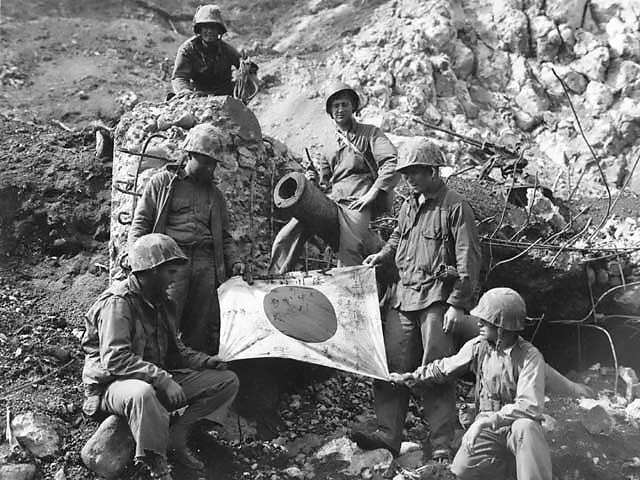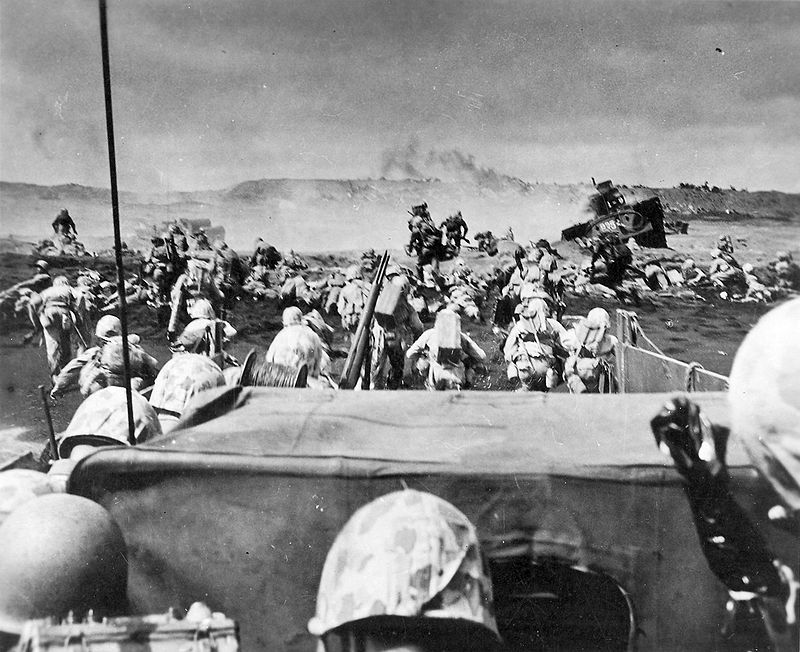
The Battle of Iwo Jima (19 February – 26 March 1945) was a major battle in which the United States Marine Corps and Navy landed on and eventually captured the island of Iwo Jima from the Imperial Japanese Army (IJA) during World War II. The American invasion, designated Operation Detachment, had the goal of capturing the entire island, including the three Japanese-controlled airfields (including the South Field and the Central Field), to provide a staging area for attacks on the Japanese main islands. This five-week battle comprised some of the fiercest and bloodiest fighting of the Pacific War of World War II.
After the heavy losses incurred in the battle, the strategic value of the island became controversial. It was useless to the U.S. Army as a staging base and useless to the U.S. Navy as a fleet base. However, Navy Seabees rebuilt the landing strips, which were used as emergency landing strips for USAAF B-29s.
The IJA positions on the island were heavily fortified, with a dense network of bunkers, hidden artillery positions, and 18 km (11 mi) of tunnels. The American ground forces were supported by extensive naval artillery, and had complete air supremacy provided by U.S. Navy and Marine Corps aviators throughout the entire battle.


Japanese combat deaths numbered three times the number of American deaths although, uniquely among Pacific War Marine battles, American total casualties (dead and wounded) exceeded those of the Japanese. Of the 21,000 Japanese soldiers on Iwo Jima at the beginning of the battle, only 216 were taken prisoner, some of whom were captured because they had been knocked unconscious or otherwise disabled. The majority of the remainder were killed in action, although it has been estimated that as many as 3,000 continued to resist within the various cave systems for many days afterwards, eventually succumbing to their injuries or surrendering weeks later.
Despite the bloody fighting and severe casualties on both sides, the American victory was assured from the start. Overwhelming American superiority in numbers and arms as well as complete air supremacy—coupled with the impossibility of Japanese retreat or reinforcement, along with sparse food and supplies—permitted no plausible circumstance in which the Americans could have lost the battle.
Joe Rosenthal’s Associated Press photograph of the raising of the U.S. flag on top of the 169 m (554 ft) Mount Suribachi by six U.S. Marines became an iconic image of the battle and the American war effort in the Pacific.

Recent Comments